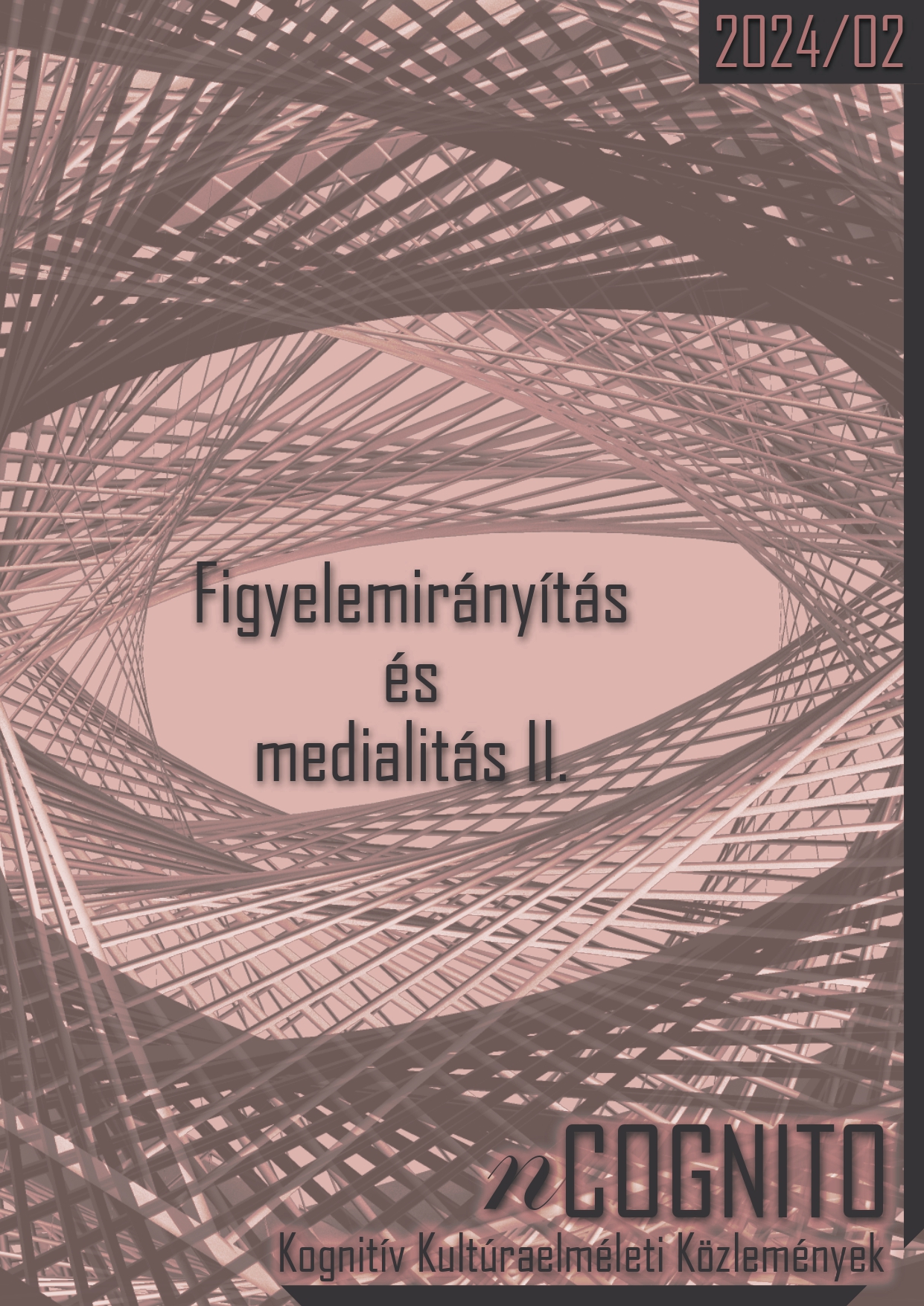“Everything goes dark in the blink of an eye” Direction of attention, genre and person marking in Péter Závada’s poems
Main Article Content
Abstract
The paper attempts to find a connection between the patterns of attention direction in poetry, the aspect of genre schemas and the linguistic phenomenon of person marking, within the theoretical framework of the forthcoming ELTE-Lírakorpusz. In Péter Závada's volume A muréna mozgása ‘The Movement of the Murena’, there are several works that reflect on the process of observation, the (visual) direction of attention, and offer the possibility of a more traditional (transcending) meaning-making procedure (Ingamozgás/A szó árnyéka ’Pendulum motion/The shadow of a word’, Ingamozgás/A kalapács árnyéka ’Pendulum motion/The shadow of a hammer’, Munkajegyzetek/A felvezetés értelme ’Working notes/The meaning of the introduction’, Egy alma határai ‘The boundaries of an apple’). With a thorough analysis, I map the modes of poetic attentional control in the volume, adopting the categories proposed by Lucy Alford about transitive and intransitive poetic attention. And since these categories also define genre schemas in Alford’s model, the second step of the analysis examine the characteristics of person marking in the texts relying on the conclusions of genre classification, with the aim of mapping genre-specific features on the one hand, and on the other, in search of connections towards a cognitive poetic reinterpretation of certain lyric genres.
Article Details
Funding data
-
Nemzeti Kutatási Fejlesztési és Innovációs Hivatal
Grant numbers K 137659
References
Alford, Lucy. Forms of Poetic Attention. New York: Columbia University Press, 2021.
Aradi Csenge – Domsa Zsófia – Horváth Márta – Szabó Judit. „Figyelemirányítás és medialitás. Előszó”. NCOGNITO – Kognitív Kultúraelméleti Közlemények 3.1 (2024), 3‒4. https://ojs.bibl.u-szeged.hu/index.php/ncognito/article/view/45931
Horváth Márta – Szabó Erzsébet. „Kognitív irodalomtudomány”. Helikon Irodalomtudományi Szemle 59.2 (2013), 139‒149.
Horváth, Péter – Simon, Gábor – Tátrai, Szilárd. „Annotation of person marking constructions on the Corpus of Hungarian Lyric Poetry”. Studia Linguistica Hungarica 34 (2022), 22‒37. DOI: https://doi.org/10.54888/slh.2022.34.22.37
Ramazani, Jahan. „Elegy and Anti-Elegy in Stevens’ Harmonium: Mockery, Melancholia, and the Pathetic Fallacy”. Journal of Modern Literature 17.4 (1991), 567‒582.
Simon Gábor. Egy kognitív poétikai rímelmélet megalapozása. Budapest: Tinta Könyvkiadó, 2014.
Simon Gábor. Bevezetés a kognitív lírapoétikába. Budapest: Tinta Könyvkiadó, 2016.
Simon, Gábor. „The perspective of the other. A corpus-based analysis of visual perception in Hungarian elegiac poetry”. Cognitive Linguistic Studies 10.2 (2023), 342‒366. DOI: https://doi.org/10.1075/cogls.00104.sim
Simon Gábor – Tátrai Szilárd. „»Tőlem ne várjon senki dalt« – Az elégikus líramodell kidolgozása Arany János költészetében”. Magyar Nyelvőr 141.2 (2017), 164‒190.
Simon Gábor – Tátrai Szilárd. „A modern magyar elégia kognitív poétikai modellje.” Történeti változatok elégiára. Szerk. Ferenczi Attila & Hajdu Péter. Budapest: L’Harmattan, 2022, 133‒149.
Szabó Judit. Közös figyelem és teatralitás: Figyelemirányítás Szophoklész Trakhiszi nők című tragédiájába. NCOGNITO - Kognitív Kultúraelméleti Közlemények 3.1 (2024), 69–89. https://doi.org/10.14232/ncognito/2024.1.69-89
Tátrai Szilárd. Bevezetés a pragmatikába. Funkcionális kognitív megközelítés. Budapest: Tinta Könyvkiadó, 2011.
Vandaele, Jeroen ‒ Brône, Geert. „Cognitive poetics. A critical introduction”. Szerk. Geert Brône & Jeroen Vandaele. Berlin, New York: Mouton de Gruyter, 2009, 1‒29.
Zsidó N. András. A figyelem kognitív pszichológiája. Budapest: Akadémiai Kiadó, 2022.

